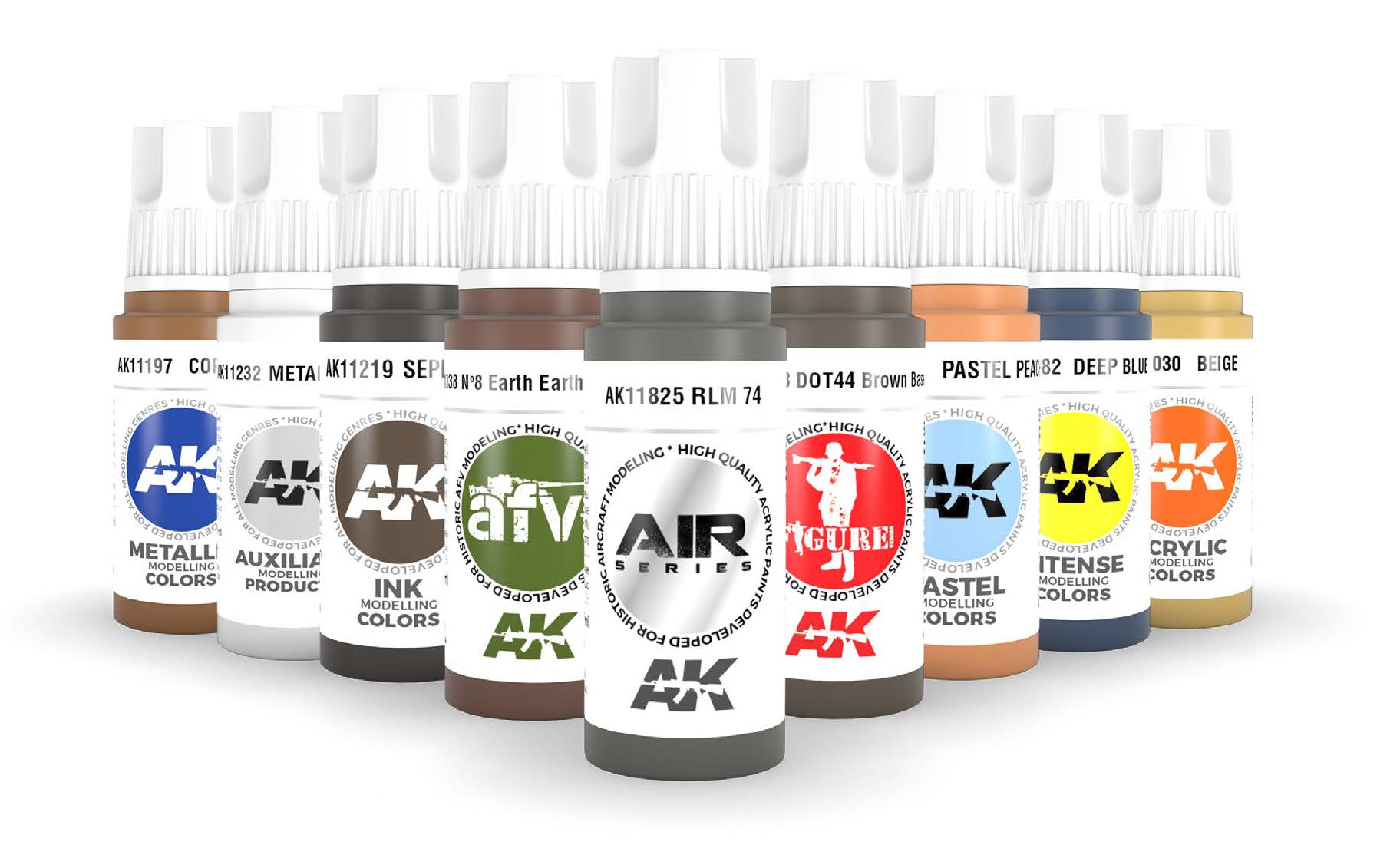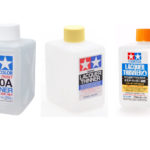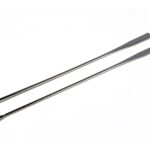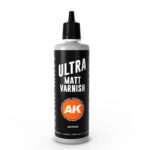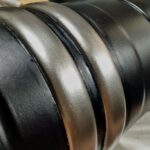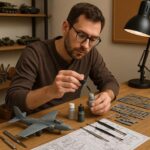How to Effectively Use 3rd Generation Acrylic Paint
Overview
3rd Generation Acrylic Paint offers a lacquer-like hard finish, self-levelling properties, and no tip-dry issues. While it provides excellent results, its unique formulation requires specific thinning, application, and cleaning practices for optimal performance.

Thinning & Dilution Rates
- Colours: Mix 1:1 to 7:3 (3G Acrylic Thinner to Paint).
- Metallics: Mix 8:2 (3G Acrylic Thinner to Paint).
Recommended Thinners
- AK 3G Acrylic Thinner: Provides optimal results.
- Distilled Water: Reduces brush wake but less effective than dedicated thinner.
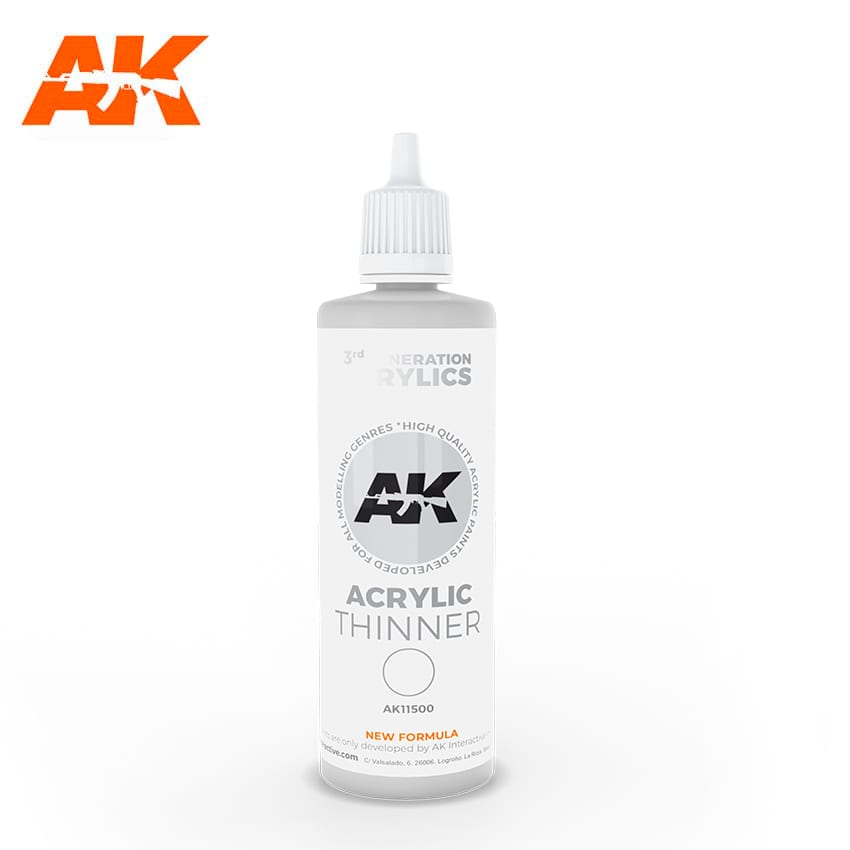
AK11500
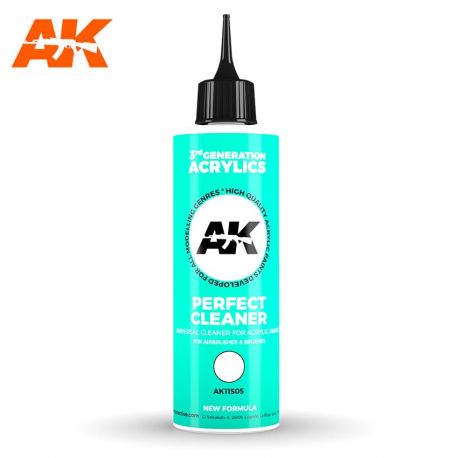
Primer Recommendations
For best results, use compatible primers, ensuring a smooth, adherent surface for painting.
Airbrush Cleaner Tests
To evaluate cleaning solutions for 3G Acrylic Paint, a skin-over drying test was conducted. A drop of paint was allowed to dry partially to simulate real-world conditions.
Findings:
- Vallejo Airbrush Cleaner: Creates a semi-soft sheet that can clog airbrushes.
- AMMO Cleaner: Turns paint into gelatinous clots, causing blockages.
- TAMIYA Airbrush Cleaner: Marginally effective; still likely to plug an airbrush.
- Lacquer Thinner (Recochem – Solvable): Dissolves dried paint effectively, minimizing clog risks.
- Water: Rehydrates wet paint but ineffective on dried paint.
Airbrush Cleaning Tips
To prevent clogging and ensure smooth operation:
- Back Bubble: Push cleaner and residue back into the paint cup and discard. Repeat several times.
- Brush Cleaning: Use a long-bristle paintbrush (e.g., a rigger) to clean the paint cup and channels.
- Flush: Spray airbrush cleaner or water through the nozzle until clear.
- Nozzle Maintenance: Clean with cotton buds (preferably with hollow shafts to avoid bending or damaging the needle).
Best Practices:
- Clean immediately after use with water to prevent hardened paint.
- For overnight-dried paint, soak in Recochem Lacquer Thinner to emulsify and remove.
Technical Insights
- Unique Thinner Composition: Contains isopropanol and other ingredients that instantly mix with paint but differ from traditional thinners like X-20A – formulated specifically for TAMIYA X/XF acrylic paint only.
- Odd Back-Bubbling Behavior: Forms geometric bubbles rather than round ones, hinting at a viscous membrane in the formulation.
- Curing Properties: Once cured, the paint resists most cleaners except Recochem Lacquer Thinner.
Cleaning Challenges:
- Water-soluble acrylics form an insoluble residue when dry, unlike lacquer-based paints that can be reactivated.
Final Thoughts on 3rd Gen Acrylic Paint
3rd Generation Acrylic Paint stands out for its:
- Tip-dry resistance.
- Quick drying and self-levelling.
- Easy cleanup with water immediately after use.
Pro Tips for Usage:
- Clean with water immediately after painting to avoid hardened residues.
- For dried paint, use Recochem Lacquer Thinner to emulsify.
- Always back bubble and flush thoroughly between colours.
- Use a 250mL Right Angle Bent Tip Squeeze Bottle for quick and easy water flushing.
Summary:
- 230 Colours: Wide selection of water-based acrylics.
- Durability: Resistant to enamel thinner and masking tape shear.
- Ease of Cleaning: Minimal effort required with the right practices and tools.
What to Avoid:
- TAMIYA Airbrush Cleaner: Ineffective for 3G Acrylic Paint.
By following these practices, you’ll maximize the performance of 3G Acrylic Paint while minimizing maintenance hassles.

